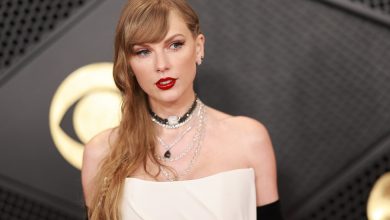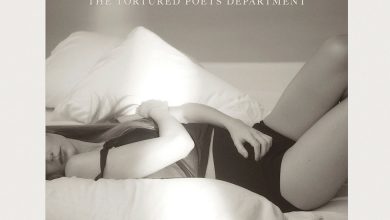The Wide World of Puppetry Converges on New York
Forget the sunglasses, the baseball caps, the featherweight clothing. Heat or no heat, it’s time to choose a fantastical mask and a wild costume and head to the Lower East Side to join a Wednesday evening parade. Hades himself will welcome you.
The occasion? It’s Halloween in August, the theme of the third International Puppet Fringe Festival NYC, which officially begins with this open-to-all procession on Suffolk Street. This year’s festival, which arrives with more than 50 performances, as well as cabarets, craft workshops, panels, open mics and films, celebrates the legacy of the master puppeteer and theater artist Ralph Lee.
Lee, who died in May, invented one of New York’s most popular puppet revels — the Village Halloween Parade — and Wednesday’s street stroll will feature not only his Greek god of the underworld but also his Fat Devil and Yama, the Chinese Lord of Death. Such creations underscore one of the festival’s core principles: that puppetry is more than child’s play.
“People have this misconception that it is just for, like, birthday parties or children’s television shows,” said Manuel Antonio Morán, the artistic director of the festival, which is produced by Teatro SEA, the Latino theater that he founded; his own agency, Grupo Morán; and the Clemente Soto Vélez Cultural and Educational Center, where Puppet Fringe performances will run through Sunday. “Yes, it is for that, too,” he said in an interview, but in many countries, it’s “part of the folklore, it’s part of the tradition.”
Folklore and mythology continually inspired Lee, who collaborated on this year’s festival despite his declining health. His work, including incarnations of the ghost of Henry Hudson, a mermaid and Coney Island sideshow characters, will appear in Brendan Schweda’s “Barnacle Bill the Husband,” one of a special group of brief, intimate works for small audiences. On Saturday, the festival will host a round-table discussion with Lee’s troupe, the Mettawee River Theater Company. But the greatest breadth of his creativity will be on display through Aug. 31 in two exhibitions: “Theater Unmasked: Photographic Glimpses of Ralph Lee’s Work” and “Myths, Legends and Spectacle: Masks and Puppets of Ralph Lee.” (The festival’s exhibitions and outdoor performances are free; indoor shows are $20 each, and day passes $75.)
“What I want people to experience while they’re here is that the world is whatever you decide to make it for yourself,” said Matthew Sorensen, who curated the shows of Lee’s work.
The more than 60 pieces in “Myths, Legends and Spectacle” cover six decades and range in tone from the fiercely haunting raffia-haired mask of a Japanese demon from the play “The Mask of Kitamura” (1983) to the 11-foot-tall, sweetly smiling Grandmother Earth puppet from “Nanabozho,” a staging of a Native American tale (1980). And everywhere, Lee gave castoffs new life: Piano keys serve as puppet teeth, and can lids as eyes. An open mailbox becomes the head and jaws of a dragon; the ribs of a baby carriage form its body.
This exhibition “opens up people’s ideas about materials,” said Casey Compton, Lee’s widow and frequent artistic collaborator, as she helped install the show. Many, she added, illustrate Lee’s method of taking “what’s just right there” and “exploring what it can do.”
Beyond Lee’s creations, an innovative approach to materials also distinguishes the other festival offerings, like “Sapientia,” a 10th-century play by Hroswitha of Gandersheim, sometimes called the West’s first female playwright. The title character, a Christian, opposes the pagan emperor Hadrian, who responds by torturing her young daughters. Scapegoat Carnivale, a Montreal-based theater company, stages the play as satirical object theater: Hadrian is portrayed by an espresso pot, Sapientia by a hand mirror and the children, who in the story are miraculously spared pain, by teacups. The torture devices include an iron and a George Foreman grill.
“The objects are able to kind of deconstruct and reveal almost the absurdity, but also support the miraculous nature” of the play, said Mia van Leeuwen, who worked on the adaptation and directed it.
Another humble substance stars throughout the Puppet Fringe: paper. “You can bind it together, you can rip it, you can make a pop-up of it, you can chew it up and spit it out,” said Yael Rasooly, an Israeli puppeteer who does all of those in her slightly macabre solo show “Paper Cut.” Rasooly, who will also teach a puppetry master class at the festival, portrays a secretary whose Hollywood fantasy world is made up of old movie magazine cutouts.
A more joyful exploration of paper’s possibilities unfolds in “The Paper Play,” which the Taiwanese company Puppet Beings Theater will present outdoors at the festival and indoors in a separate performance on Sunday at Flushing Town Hall in Queens. Consisting of two parts — one a gentle fable and the other a celebration of its medium’s transformative powers — this American premiere exemplifies the Puppet Fringe’s less spooky side.
The family-friendly fare also includes four productions from Teatro SEA. In “The Crazy Adventures of Don Quixote,” a musical Morán wrote with Radamés Gavé, don’t be surprised to see Cervantes’s 17th-century characters duel with “Star Wars”-style light sabers. They will also speak both English and Spanish, a bilingual approach adopted by all Teatro SEA puppetry shows. Another production, the Swedish Cottage Marionette Theater’s urbanized “Little Red’s Hood,” will be performed once in Spanish and once in Mandarin.
“From the beginning, I’ve been wanting to be a very inclusive festival,” said Morán, who founded the biennial Puppet Fringe in 2018. (The second edition was held in 2021 because of the pandemic.) That has meant featuring shows in different languages, producers from minority groups and female puppeteers like Heather Henson, who has curated two festival short-film programs from Handmade Puppet Dreams, her company’s collection of works by independent artists: “Frights and Delights,” featuring fanciful ghosts and monsters, and “Kidscapes,” a series for children.
Puppetry “is very cross-disciplinary,” said Henson, who noted that her father, the renowned puppeteer Jim Henson, often produced art that “would have never worked on the stage.” Jump cuts, extreme close-ups and scene dissolves can make puppet films more exciting — or unsettling.
But however audiences experience puppetry, its power often derives from the extraordinary interplay between human agency and physical artworks.
“There’s lots of corny words for it, like magic,” said Compton. “But it is very special, when those elements come together, and there’s a life that can be shared.” Ralph Lee, she added, “was always going for that.”




